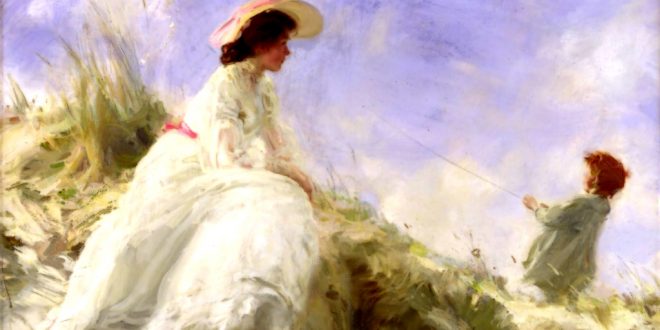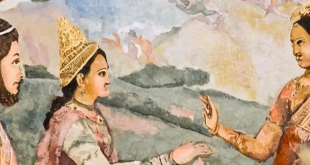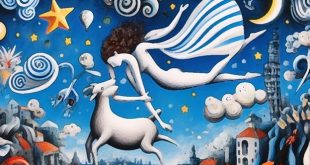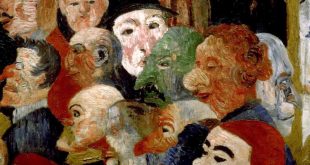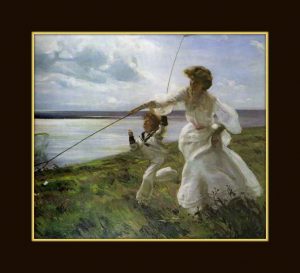 CHARLES SIMS 1/3 – The son of a textile manufacturer, he also works as part of the curtains, but soon he joined the South Kensington College of Art (then he was in Paris to further his studies of painting and decorating). Back again to London to join the Royal Academy School, he was expelled in 1895, two years later. In 1897 he married the daughter of a painter. Since 1896, his career got approvals rising, because the peculiarity of his painting creates a kind of magic realism, with intense force representative and plastic.
CHARLES SIMS 1/3 – The son of a textile manufacturer, he also works as part of the curtains, but soon he joined the South Kensington College of Art (then he was in Paris to further his studies of painting and decorating). Back again to London to join the Royal Academy School, he was expelled in 1895, two years later. In 1897 he married the daughter of a painter. Since 1896, his career got approvals rising, because the peculiarity of his painting creates a kind of magic realism, with intense force representative and plastic.
CHARLES SIMS 2/3 – Gradually, is born a self-conscious desire to escape from those years, and his paintings became strange, populated by fauns, satyrs and fairy-like creatures. Charles Sims spent most of his painting career as a conventional landscape and portrait painter. Its typical production (in the first part of the activity), ranged from portraits, landscapes, to the decorative painting themes in general, even if revisited in a personal way, with the use of oil, tempera and watercolor.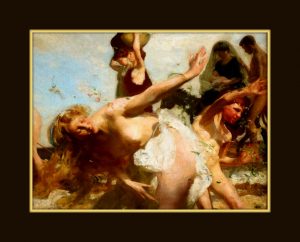
CHARLES SIMS 3/3 – The the First World War had a profound effect on Sims’ work (the death of his son in action, caused him mental turmoil). Around 1920, the painting of his style radically changes (along with his character, where he develops mystical traits), being inside of a solitary life. His painting is less schematic, it is now more free and violent, extremely emotional. Looking at his paintings of that period, you too can see that his characters seem to show bathed in a ghostly light. In Scotland, tormented by hallucinations and insomnia, he committed suicide, not far from his home, in St. Boswells. 
You can see more on Meeting Benches, looking for: http://meetingbenches.com/2016/06/charles-sims-18731928-creating-a-kind-of-magic-realism-with-oil-tempera-and-watercolor/
 Meeting Benches World art in all forms
Meeting Benches World art in all forms
